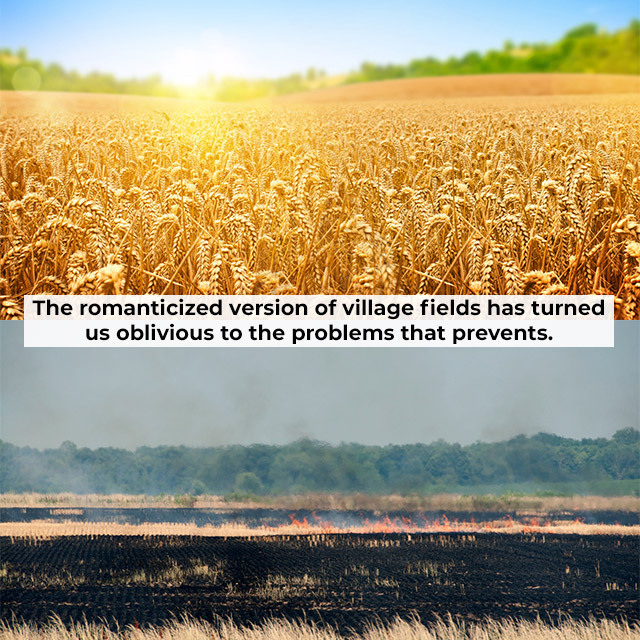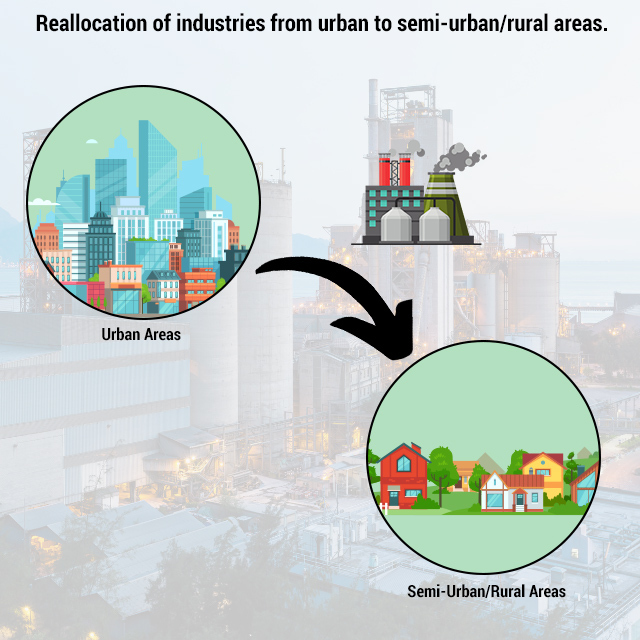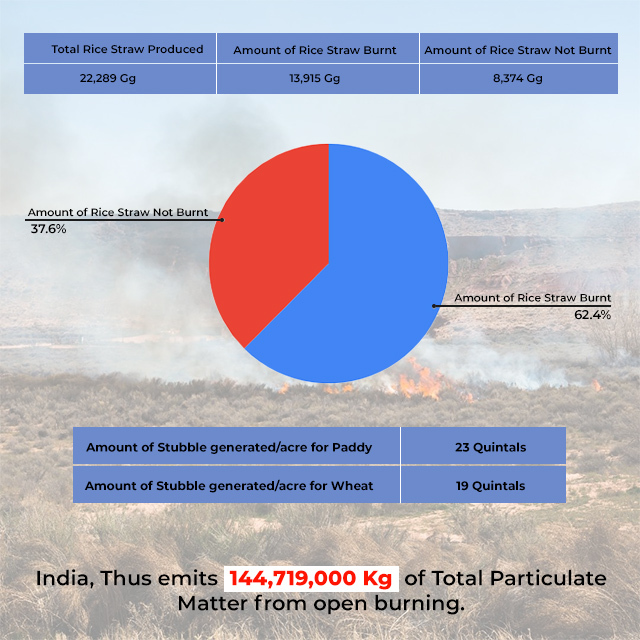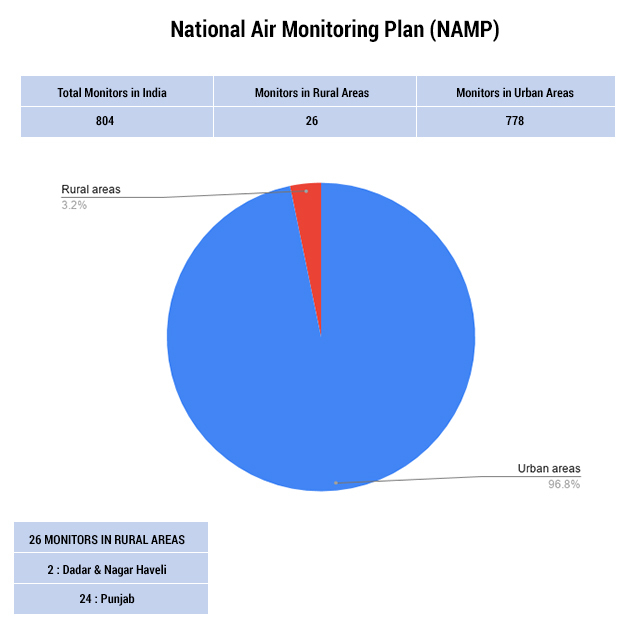Rightfully, the quintessential essence of our country, India lies in its rural lands. They epitomize the diversity, zest, culture, and vibe of our nation. However, the gloomy layer of air pollutants shrouds the very essence of our country and somehow we remain oblivious to it. Is the problem of rural air pollution in India forgotten or is it ignored?
Visualize air pollution. Now, if I ask you to put it into words, you would mostly describe an industrial operation with chimneys spewing smoke and dust. Or you would envision a traffic junction encumbered with vehicles releasing toxic exhaust.
There is a common misconception that air pollution is just limited to cities. We are delusional to identify the rising menace of increasing concentrations of air pollutants as an urban issue. There is no doubt that cities are the principal focal point of air-contaminating emissions, but amidst all the scrutiny of city pollution amasses, there remains a huge question mark on how polluted rural India is.

When it comes to villages, we fall for the sentimentalized version of what we see in the movies. Through the rose-tinted glass, the imagery with fresh breeze, swaying trees, lush greenery, and the fragrant odor of the field occupies our minds whenever we think of rural India.
However, the reality is far away from the vision ingrained in our heads. The truth of our rural lands is as earth-shattering (if not more). However, almost all mitigation programs prioritize the urban issue, and rural air pollution remains unaccounted for.
How do they get polluted?
Rural air pollution stems from various natural and anthropological sources.
Natural Sources.
Organic contaminants that render the air deplorable in rural areas include pollen, spores, fur, dander, molds, feathers, hair, dust, sand, grit, and other particulate matter.
Air, in its usual course, disseminate these contaminants from animal, plant, and land resources. This dispersion deteriorates the quality of air. Other natural phenomena like forest fires, dust storms, and sand storms also choke the air with breathable particulates (PM2.5).
Climatic conditions, air movement, and topography of a location also drive its air quality. The wind takes charge of the dispersion and dilution of pollutants. The vertical diffusion in the atmosphere depends on the temperature gradient of the location. Whenever temperature inversion occurs, i.e. the rapid cooling of lower layers of the atmosphere during winters, the vertical movement of air becomes restricted. This results in the entrapment of air pollutants and water vapors in the troposphere that is termed smog.
Anthropological Sources
Many human activities are attributable to the rising menace of air pollution in rural India.
Stubble Burning
One of the most prominent reasons is the open burning of the crop residue. National authorities and academicians acknowledge stubble burning as a key contributing factor that blankets entire north India with respirable particulate matter (PM2.5). This exercise is more common during winters when there is lesser time for the farmers to prepare their fields for the sowing of wheat. The Indo-Gangetic Plain, especially Haryana and Punjab top in burning agricultural residues.
Use of Chemical Agents in Fields
The use of artificial regulators, like pesticides and insecticides, over the crops, is another source of rural air pollution. These chemicals release volatile organic compounds (VOCs) into the air. VOCs combine with oxides of nitrogen in the sunlight to form ozone gas. It leads to ambient ozone pollution. Therefore, they are not just detrimental to the yield but they also alter the atmospheric chemistry in heinous ways.
Relocated Industries

Relocation of industrial units is also elemental to rural pollution. The heavy industries have moved away from the periphery of urban dwellings. Their shift to the semi-urban and rural belts has made the local population the recipients of the toxic air. The use of cleaner fuels was a more sensible alternative to control the harmful emissions. However, relocation of units only relocates the problem- a trade-off to compromise rural health for the urban population. Employment of solid fuels in these units, such as coal processing, cement-making, mining, etc. also multiplies the effect they have on the air.
Brick Kilns
Other sources include brick kilns and hot mix plants. They are among the most polluting operations that contaminate the air with particulate and toxic gases. A substantial number of brick kilns now use the modern zig-zag technology. However, those running in the semi-urban areas operate on conventional technologies. The most polluting are the clamps that involve open combustion of bricks without chimneys. Clamps are the most common in the states of Orissa, Maharashtra, and southern Gujarat. A delocalized network of clamps is operational in these states, far away from even smaller towns. Fewer efforts are made towards modernizing these toxic chambers.
Dependency on Solid Fuels

The dependency of the locals on solid fuels for cooking is a risk factor that increases indoor air pollution. Since a vast majority of the population use solid fuels, indoor air pollution is more prominent in rural India.
Rural air pollution is not a myth.
Air Pollution results in the premature demise of around 10.5 lakh people annually. 69% of those (approx. 7 lakh) belong to the rural areas. The concentrations of PM2.5 and ozone in rural India are generally thrice their urban levels. This is worrisome as around 70% of the total Indian population resides in rural areas.
Numerous studies indicate that the rural stretch of Indo-Gangetic Plains- Punjab to West Bengal- is the worst-hit by air pollution.
Incineration of agricultural residue contributes to 7% of total PM2.5 emissions in the country. Moreover, the city-specific concentrations are much more staggering, especially in the Indo-Gangetic plains.

In India, 23 quintals of stubble are produced per acre for paddy crop. In the case of wheat, it is 19 quintals for every acre. Rice fields produce around 22,289 gigagrams of residue annually. Out of that enormous biomass, 13,915 gigagrams (62.42%) is set on fire. Haryana and Punjab contribute to 48% of the total stubble production that ends up openly burnt in the agricultural fields. As denouement, open burning of stubble releases 1,44,719 megagram or 14,47,19,000 kilogram of total particulate matter (TPM) in India.
Satellite studies and GIS data suggest that rural air pollution is just as severe as city pollution. Despite the lack of vehicular pollution, the levels of pollutants are horrifying.
Current status of rural air monitoring. How serious are we?
India flagged off National Clean Air Programme (NCAP) in 2019 as a nation-wide crusade to combat air pollution to reduce particulate concentrations by 20-30% by 2024. It involves comprehensive planning to slash urban and rural pollution within stipulated time frames. However, there has been no development on the rural front as yet. Perhaps, we as a nation do not harbor any concern for the rural population, or we have forgotten our duties towards them.

Under National Air Quality Monitoring Programme (NAMP), 804 manual monitoring stations are currently operational. For real-time air monitoring, 274 continuous ambient air quality management systems (CAAQMS) are there. These cover 29 states and 6 union territories of India.
Maximum real-time monitoring stations are present in the tier-1 cities and a few in the tier-2 cities. Sadly, there are no monitoring stations to monitor pollution levels at rural locations in real-time. To add to this, Arunachal Pradesh, Andaman & Nicobar Islands, and Manipur do not have real-time monitoring stations.
The current circumstances of the NAMP network, on the other hand, are only a tad better. It covers all the states, but 96% of the monitoring stations lie within the city limits. However, out of the total 804 stations, rural areas only have a meager fraction of 26. Punjab is the only state in the country to have air quality stations in villages. There are 47 monitoring stations in the state, and 24 are located in villages. The other 2 are there in the union territory of Dadra and Nagar Haveli.
Way Forward
Air pollution is a trans-boundary problem. It knows no boundaries and engulfs everything that comes in its way. There is an indispensable need to control this evil effectively as soon as possible.
The National Ambient Air Quality Standards of India by CPCB are already four-times the standards set by the World Health Organization (WHO). Nevertheless, a gigantic proportion of the country fails to meet the stipulated limits.
Authorities have launched several programs to mitigate the problem of city pollution. But there is ignorance towards the equally deplorable condition of rural India. We can pin this down on the lack of concrete and reliable data that can point towards the severity of the issue.
India needs a dense network of air quality stations in the rural parts of the country via a public-private partnership scheme. Nevertheless, we can achieve this by installing low-cost monitors and collating the data on a cloud network. There is also an emerging need for holistic research on rural air pollution. The authorities need to draft effective schemes to mitigate the pollution. They also need to ensure the effective implementation and evaluation of the programs. Only then can we sustain the essence of India.